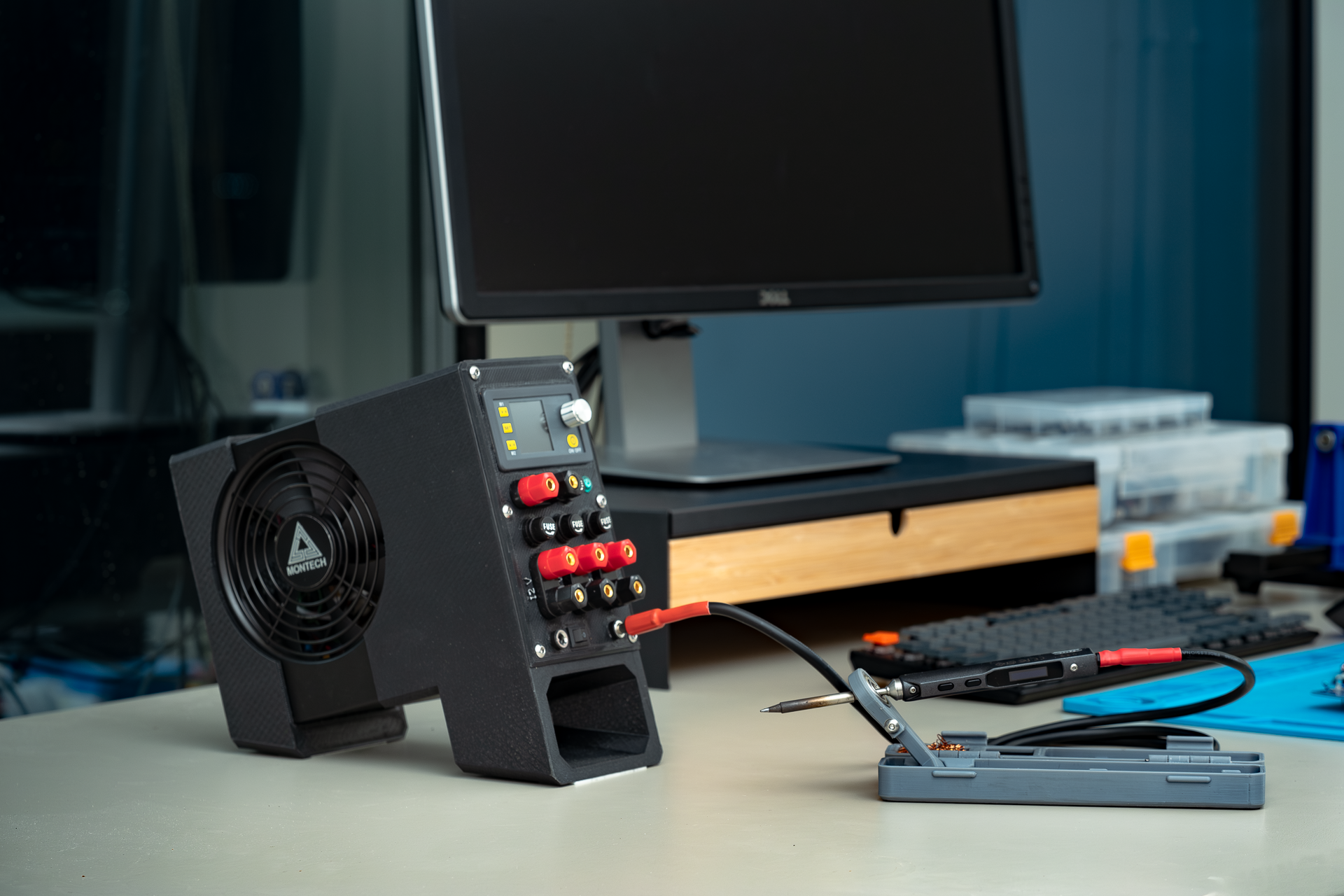Benchtop Power Supply
This DIY benchtop power supply is a compact and professional-looking hardware development tool. It features adjustable voltage output (0-24V, 0-3A) using a DPS3003 buck converter module and fixed outputs of 12V, 5V, and 3.3V for common electronic devices.

When it comes to hardware projects, having a reliable and adjustable power supply is essential. Motivated by the need for variable voltage and current capabilities, I created my own benchtop power supply. By utilizing a standard ATX power supply as the foundation and integrating various features such as a 3D-printed enclosure, a power output for a soldering iron, and adjustable and fixed outputs, I aimed to construct a versatile and efficient power supply solution. This post will guide you through the methods and components behind the construction of my DIY benchtop power supply.
The Ideal Starting Point
The ATX power supply was an ideal starting point for my project due to its availability, integrated cooling system, and high-output power. To add a professional touch and ensure a neat setup, I used Fusion 360 to design a customized enclosure, which was brought to life using a 3D printing service. The 3D-printed enclosure adds aesthetic value (since it sits on my desk) and provides organization and functionality for my benchtop power supply.
Safety Considerations
Safety was a paramount concern throughout the project. While the modifications to the power supply were limited to cutting the ends of the wiring harness, it is crucial to recognize the inherent risks associated with working with mains power. It is important for anyone attempting this project to exercise caution and take responsibility for their actions.
Enhanced Functionality
In addition to the primary objective of circuit testing, I incorporated a power output for my soldering iron. By connecting a 4A boost converter to a pair of 12V outputs from the ATX power supply, I ensured efficient and controlled power delivery to the soldering iron. The integration of a switch provides convenient control, enhancing the overall functionality of the benchtop power supply.
Adjustability and Compatibility
I utilized a DPS3003 adjustable buck converter module to have variable outputs. This module enables precise output voltage adjustment within a range of 0-24V, with a current capacity of 0-3A. I connected another 4A boost converter in series to achieve a wider voltage range than possible with the 12V supply. While this setup may have limitations at higher voltages, it has proven effective for my applications thus far.
Safety Measures and Stability
The availability of 12V, 5V, and 3.3V rails in ATX power supplies made incorporating fixed outputs commonly used in electronic devices convenient. To ensure stability and accuracy, I included a 5W 10ohm load resistor. This resistor stabilizes the power supply, particularly when operating at low power draw. Furthermore, each power output features 3A fuses in series, providing a layer of protection against overloads and short circuits.
Testing and Future Exploration
Thorough testing was conducted to validate the functionality and performance of the benchtop power supply. I measured and evaluated the output voltages, currents, and stability using multimeters and load circuits. Any minor issues encountered during the testing phase were swiftly addressed by sourcing higher-quality boards from alternate suppliers. Looking ahead, I am excited to explore further and expand the capabilities of this power supply.
In conclusion, my DIY benchtop power supply serves as a reliable and efficient tool for circuit testing and development. I have created a versatile power supply solution by leveraging an ATX power supply, incorporating 3D-printed enclosures, and integrating adjustable and fixed outputs. While it is primarily designed for stationary use on a desk, it provides convenience and functionality within a workspace. With continued usage and exploration, I anticipate further enhancements and advancements.
Source Files
Enclosure Design on Thingiverse